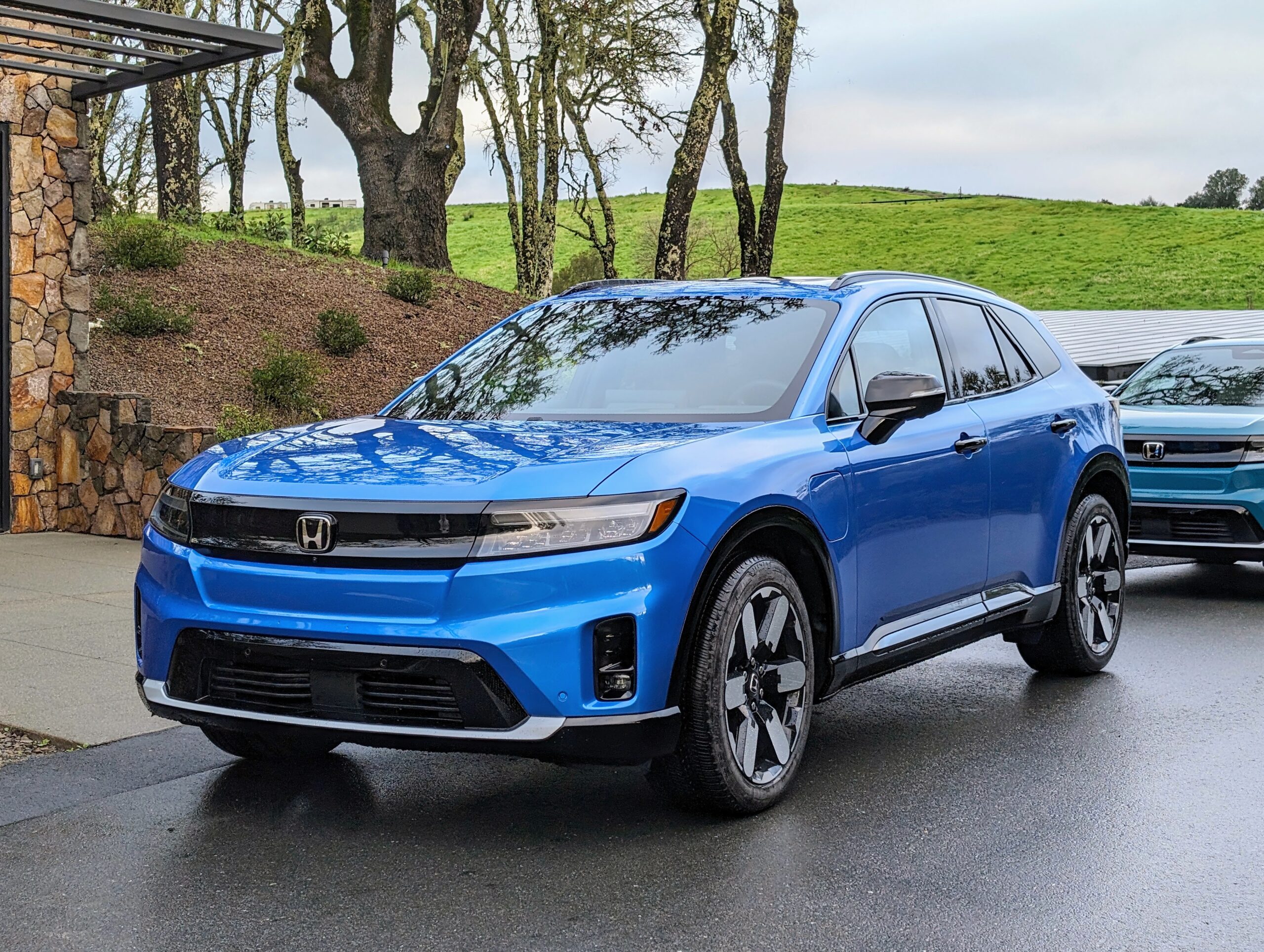Sign up for daily news updates from CleanTechnica on email. Or follow us on Google News!
As I have written previously, Majella and I went to China to see what a 53% penetration of new vehicle sales looked like. We were very impressed, to say the least. You can read about it here. Oh, and we managed to fulfill our dream of cruising up the Yangtze from the Three Gorges Dam.
Part of our tour involved a visit to the giant Buddha of Emeishan Mountain. At one service station stop along the way, from Chengdu to the mountain to see the giant Buddha, we were able to watch a NIO battery swap station in action. Sadly, we were too slow on the draw to get a video — it happened that fast! But it did give us the opportunity to explain to our fellow tourists what was going on. The biggest misconception was that the battery was going to be discarded. I had to explain a couple of times that the batteries get recharged and fitted into the next NIO to arrive. Next to the NIO battery swap was a massive row of fast chargers, most filling up EVs with their patiently waiting drivers.
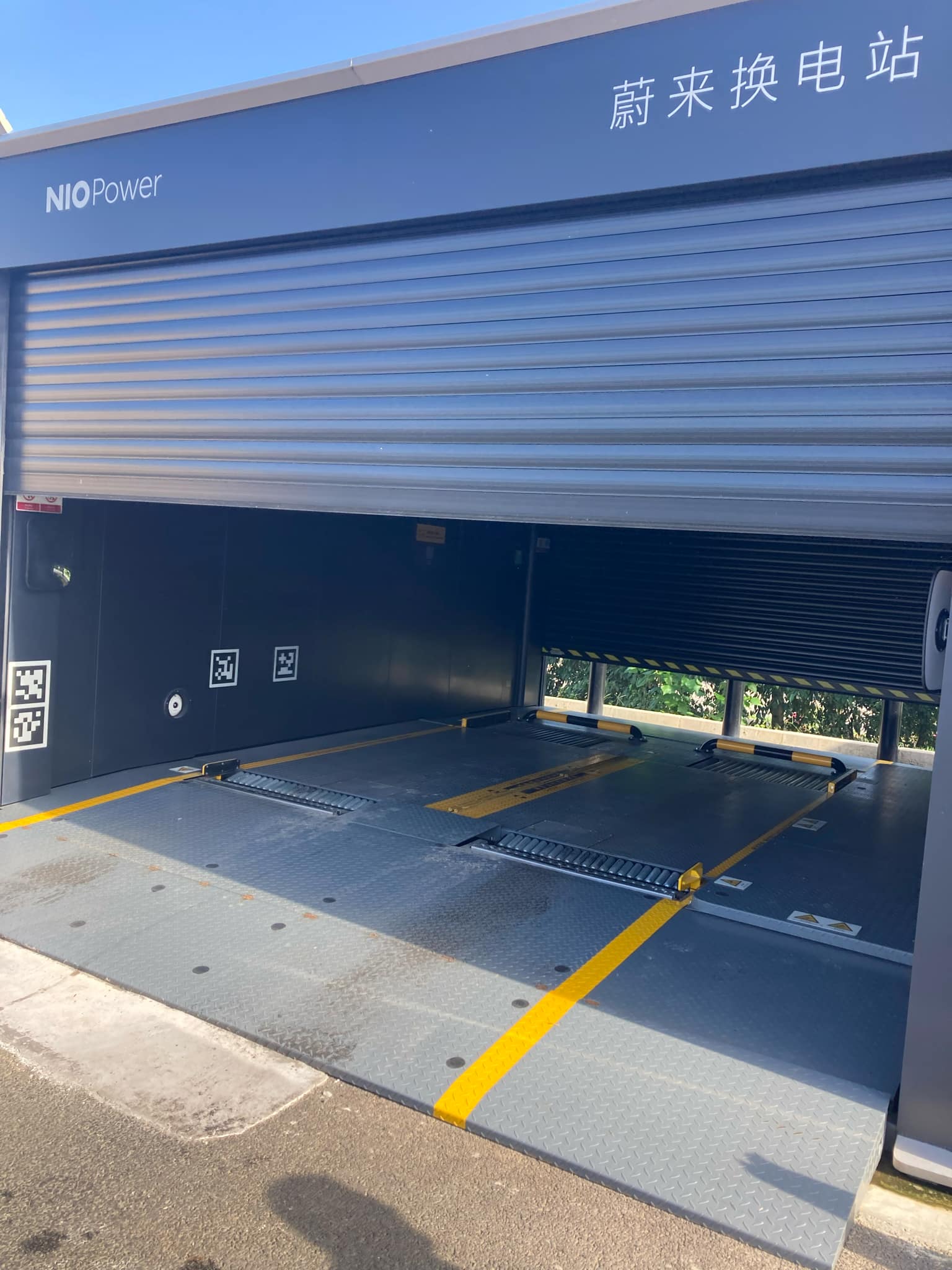

After covering over 12,000 steps at the Giant Panda Research Centre the day before, we decided not to climb the reported 1,000 steps up to the top of the 71-metre-tall Leshan Giant Buddha. So did a lot of our fellow travellers. We held several conversations explaining battery recycling and the influx of Chinese cars into Australia. There was a great deal of curiosity and a willingness to accept answers. We are no longer having to put up with those who seek an argument, or wish to scoff, or constantly shift the ground. A green Xiaomi driving past made the point well.
I thought there must be a word for this argumentative tactic and discovered something new: “In philosophy and rhetoric, eristic (from Eris, the ancient Greek goddess of chaos, strife, and discord) refers to an argument that aims to successfully dispute another’s argument, rather than searching for truth […] arguing for the sake of conflict, as opposed to resolving conflict.” Thank you, Wikipedia.
The gardens and plaza at the base of the Buddha were extensive and peaceful. As we explored, we discovered a massive bank of high-speed chargers in operation, with another bank of 28 being installed. Buddha would be pleased.
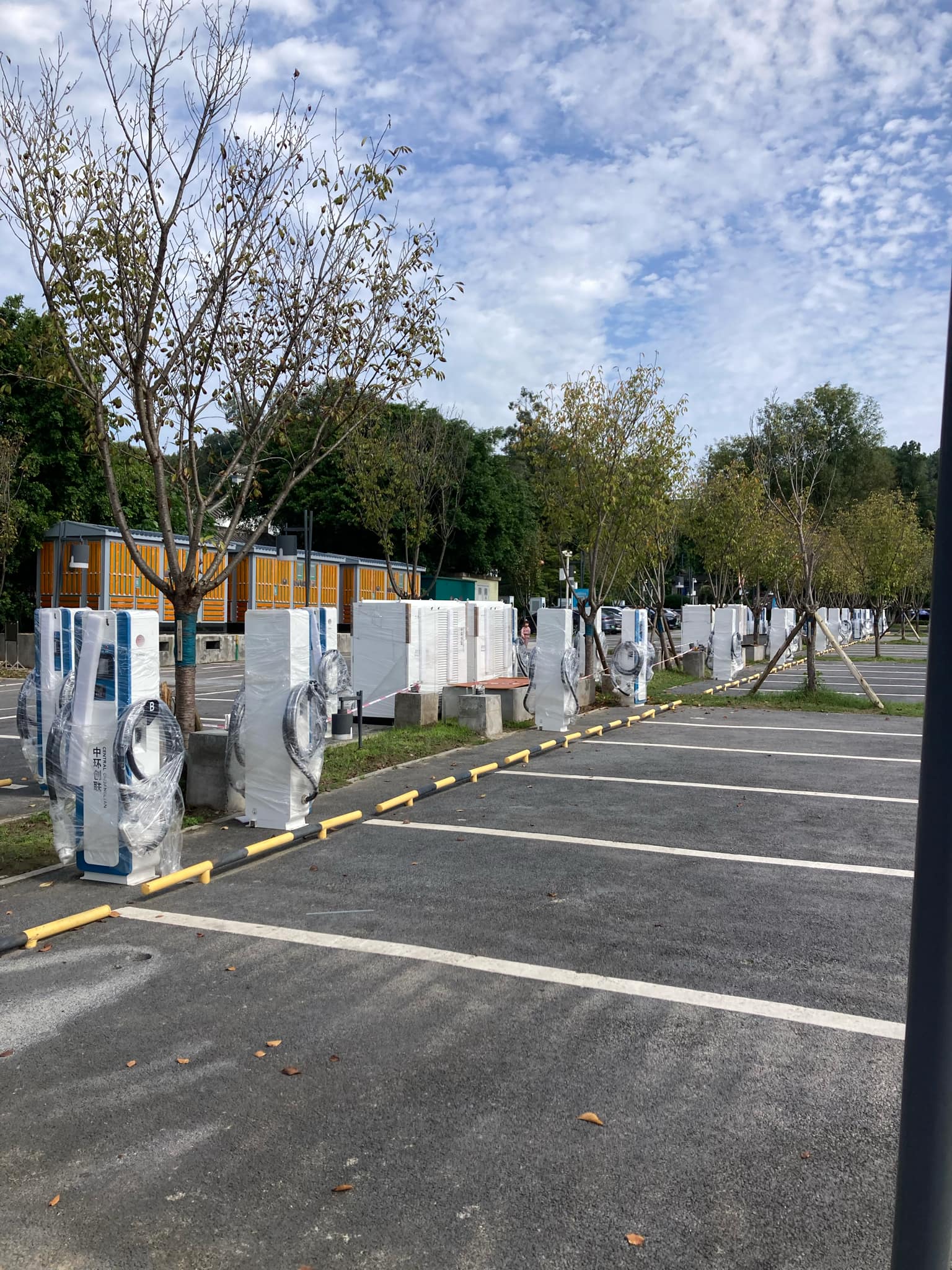
“We need to live as the Buddha taught us to live, in peace and harmony with nature, but this must start with ourselves. If we are going to save this planet, we need to seek a new ecological order, to look at the life we lead and then work together for the benefit of all; unless we work together no solution can be found.”
For those who would quibble about China’s commitment to renewable energy, I suggest you read Michael Barnard’s recent excellent article here.
The next day we were off on the high-speed train to the Three Gorges. The ridges bristled with wind turbines. We were all so tired from the early morning start that some of us fell asleep, but not all. A group of Chinese ladies wearing red leather decided to link up with some of the more fun loving of our group and serenaded our carriage. Were they pink ladies? Perhaps they were Tesla chicks. I awoke when one of them landed in my lap. Jocularity, jocularity!
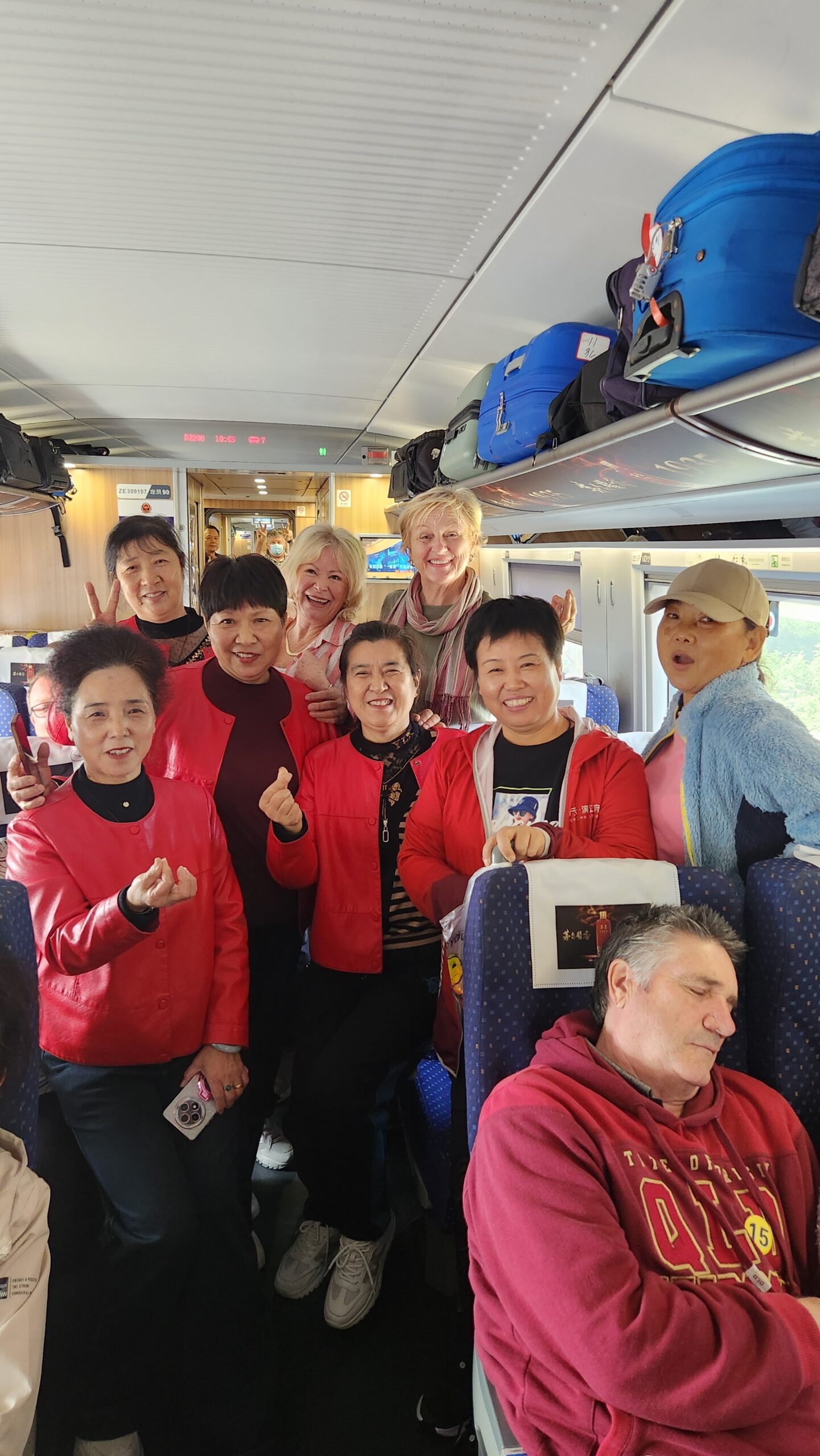
To add to the humour, we showed our fellow travellers how we could control our Tesla through the phone app. Our daughter had the car while we were away and was confused when the horn started beeping in the garage in Australia, several thousands of miles away. Tess was being well looked after, the tyre pressures were appropriate, and she had a good amount of charge.
Then, it was another long bus trip from the train station to the dam. The tour guide provided commentary and pointed out that the power from the dam is fed into the grid that powers China’s electric vehicles. We saw many shiploads of new vehicles being transported up the Yangtze. Most likely they were electric.
I made a point of wearing my BYD hat wherever we went in China, as I hoped it would provoke conversations with curious locals. Strangely, it didn’t. It appeared to me that BYD was just too common to create an interest. On shore, leaving from the boat in Fengdu, we were mobbed by school children taking part in a festival. In a blow to my ego, they were more interested in Majella than myself. See if you can find her in this picture! Majella is 5′ 9″and towers over most Chinese. Hint: she is sitting down!
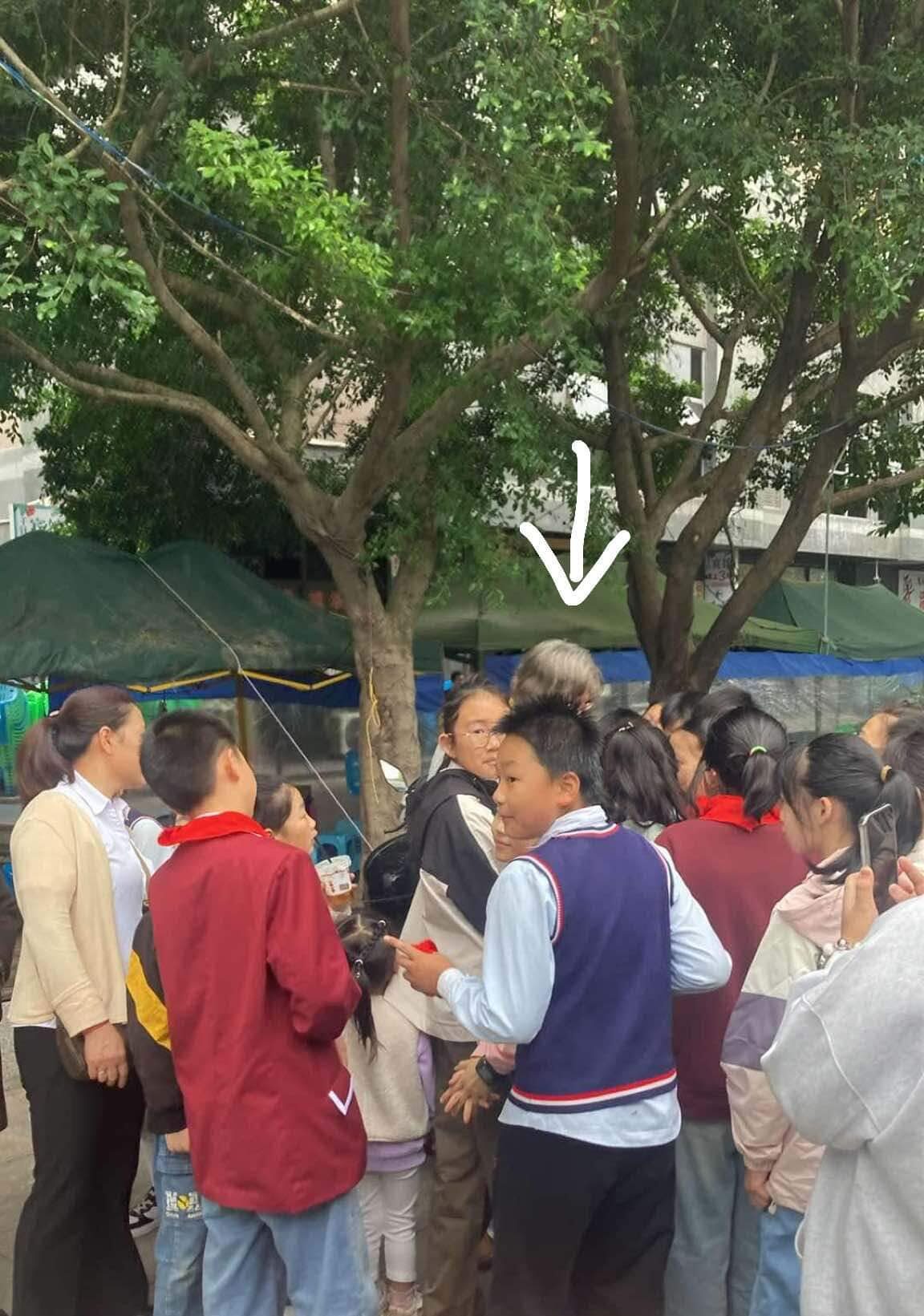
I found myself at the back of the group with a bunch of 10-year-old boys — we were doing the linguistic dance trying to communicate: “How old are you? What is your name? Where do you come from?” they asked — probably not understanding my answers. To move the conversation along, I pointed to my BYD hat. No response. So, I thought, let’s try another tactic. I loaded up the Tesla app and showed them our car, Tess. They got very excited — “Tesla, goodo!” they shouted over and over again.
Perhaps the most poignant meetings we had that day were with some older Chinese, bent and worn. They were the same age as us. We could only communicate with touch, patting, smiling, and shaking hands. What massive changes they have seen. We didn’t see too many older Chinese on our trip.
All too soon, our visit to this incredible and rapidly changing country was over and we were back on the plane for the grueling trip home. As I looked out the plane window, I was glad to see a wall of chargers and note that the ground support equipment at Chongqing Airport is battery electric.
I would urge anyone who doubts that the future is electric to visit countries that are at the vanguard of the rEVolution — go to China, go to Norway! If you can’t, then read the stats with an open mind and begin to plan for your own transition. For China, Australia, and the globe, the future is bright and electric.

Chip in a few dollars a month to help support independent cleantech coverage that helps to accelerate the cleantech revolution!
Have a tip for CleanTechnica? Want to advertise? Want to suggest a guest for our CleanTech Talk podcast? Contact us here.
Sign up for our daily newsletter for 15 new cleantech stories a day. Or sign up for our weekly one if daily is too frequent.
CleanTechnica uses affiliate links. See our policy here.
CleanTechnica’s Comment Policy



